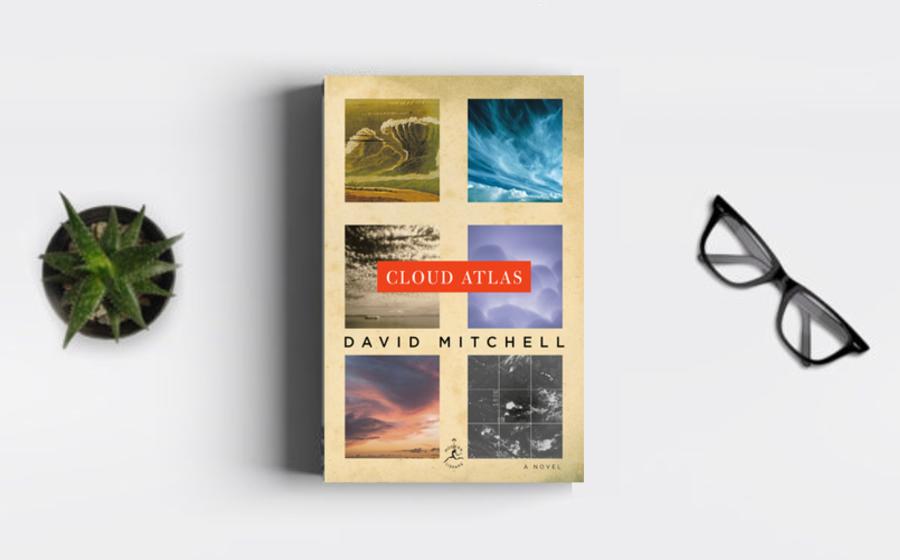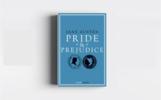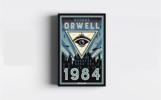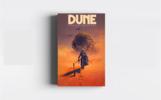"Cloud Atlas," penned by David Mitchell and published
in 2004, has swiftly ascended to the status of a
contemporary classic. This intricate narrative weaves
together six distinct stories spanning different genres,
time periods, and literary styles, forming a grand
tapestry that explores the interconnectedness of
humanity across centuries. Mitchell's groundbreaking
approach to storytelling, innovative structure, and
thematic depth contribute to the novel's contemporary
classic status, captivating readers with its
intellectual complexity, emotional resonance, and a
profound exploration of the human experience.
The
narrative structure of "Cloud Atlas" is one of its
defining features and a key reason for its contemporary
classic status. The novel unfolds as a series of nested
stories, each presented in part before moving on to the
next. The first five stories are interrupted at a
pivotal moment and then resolved in reverse order,
culminating with the final, sixth story. This innovative
structure, akin to Russian nesting dolls, encourages
readers to draw connections between seemingly disparate
narratives and discover the common threads that bind
them together. Mitchell's masterful execution of this
narrative technique engages readers in a unique and
intellectually stimulating reading experience, prompting
them to unravel the intricate web of connections that
span across time and space.
The novel's
exploration of the theme of interconnectedness and the
ripple effect of individual actions contributes to its
contemporary classic nature. Through the interconnected
narratives, Mitchell presents a vision of human
experience as a continuum, emphasizing the impact of
choices made by one generation on the lives of those
that follow. Each story echoes in the next, creating a
sense of cosmic resonance that transcends the boundaries
of time and individual lives. "Cloud Atlas" challenges
conventional notions of linear storytelling and invites
readers to reflect on the broader implications of their
own actions within the larger tapestry of humanity.
The diversity of genres and literary styles employed
throughout "Cloud Atlas" adds to its contemporary
classic status. Mitchell seamlessly transitions between
historical fiction, dystopian science fiction, mystery,
comedy, and more, showcasing his versatility as a
writer. Each narrative is crafted with a distinctive
voice, tone, and narrative style, demonstrating
Mitchell's mastery of various literary forms. This
stylistic diversity not only keeps the reader engaged
but also reflects the novel's overarching theme of the
diversity and richness of the human experience across
time.
The thematic exploration of power,
oppression, and resistance is a central element that
contributes to the contemporary classic status of "Cloud
Atlas." The narratives span from the 19th century
through a dystopian future, touching on historical
events such as colonialism, corporate exploitation, and
societal unrest. Mitchell delves into the complexities
of power dynamics, examining how individuals and
societies grapple with the consequences of unchecked
authority. The novel becomes a reflection on the
cyclical nature of power struggles and the enduring
human spirit that resists oppression, fostering
connections between disparate narratives through the
common thread of resilience against injustice.
Mitchell's narrative craftsmanship is evident in the
interconnected characters that span across different
stories and time periods. The recurring motif of a
comet-shaped birthmark and shared names, such as Robert
Frobisher and Luisa Rey, reinforces the novel's
exploration of the transmigration of souls and the
interconnectedness of human destinies. These recurring
elements create a sense of continuity and shared fate,
linking characters across the vast expanse of time.
Mitchell challenges readers to consider the implications
of these connections, prompting contemplation on the
interplay between individual agency and the larger
forces that shape the course of human history.
The exploration of the theme of reincarnation and the
transmigration of souls adds a layer of metaphysical
depth to "Cloud Atlas." The novel suggests a cyclical
pattern of existence, where characters are reborn across
different time periods, carrying echoes of their past
lives. This metaphysical dimension invites readers to
contemplate the nature of existence, the possibility of
karmic cycles, and the enduring nature of the human
soul. Mitchell's incorporation of spiritual and
metaphysical elements elevates "Cloud Atlas" beyond a
conventional narrative, making it a work that stimulates
philosophical inquiry and contemplation.
The
novel's engagement with language and the evolution of
communication contributes to its contemporary classic
status. Mitchell adeptly captures the evolution of
language across different time periods, from the 19th
century to a distant post-apocalyptic future. Each
narrative segment features a unique linguistic style
that reflects the cultural and temporal context of the
story. This linguistic diversity becomes a lens through
which Mitchell examines the fluid nature of language,
the evolution of communication, and the persistence of
certain core human experiences across linguistic shifts.
The novel becomes a testament to the enduring power of
storytelling and the ability of language to bridge the
gaps between different epochs.
Mitchell's
exploration of the relationship between the individual
and society adds a sociopolitical dimension to "Cloud
Atlas." The narratives navigate societal structures,
from the hierarchical systems of the 19th century to the
oppressive regimes of a dystopian future. Through
characters like Sonmi-451, a genetically engineered
clone in a corporatized future, and Zachry, struggling
for survival in a post-apocalyptic world, the novel
delves into the impact of societal structures on
individual agency. Mitchell prompts readers to consider
the role of individuals in shaping and challenging the
structures that govern their lives, fostering a nuanced
understanding of the interplay between the personal and
the societal.
The emotional depth and resonance
of "Cloud Atlas" contribute significantly to its
contemporary classic status. Mitchell crafts characters
with whom readers can empathize and invest emotionally,
despite the vast temporal and stylistic differences
between the narratives. From the tragic love story of
Robert Frobisher to the harrowing journey of Sonmi-451,
each narrative segment elicits a range of emotions,
creating a deeply immersive reading experience. The
emotional impact of the novel resonates with readers on
a personal level, fostering a connection that transcends
the novel's structural complexities.
The
philosophical depth and intellectual challenges
presented by "Cloud Atlas" contribute to its
contemporary classic status. Mitchell engages with
profound themes such as the nature of reality, the
illusion of linear time, and the eternal struggle
between order and chaos. The novel invites readers to
ponder existential questions, pushing the boundaries of
conventional storytelling. Mitchell's incorporation of
philosophical elements ensures that "Cloud Atlas"
remains a work that appeals to readers seeking
intellectual stimulation and philosophical exploration
within the realm of fiction.
The novel's
cinematic adaptation, directed by the Wachowskis and Tom
Tykwer in 2012, further cements its contemporary classic
status. The film adaptation, like the novel, received
critical acclaim for its visual storytelling, thematic
depth, and innovative approach to narrative structure.
The success of the adaptation brought "Cloud Atlas" to a
broader audience and solidified its place in popular
culture as a work that transcends the confines of
traditional storytelling.
"Cloud Atlas" by David Mitchell is a contemporary classic that stands as a literary masterpiece due to its innovative narrative structure, thematic depth, and exploration of interconnectedness across time and space. Mitchell's intellectual complexity, emotional resonance, and philosophical inquiry contribute to the novel's enduring appeal. As a work that challenges traditional storytelling conventions and prompts readers to reflect on the intricacies of the human experience, "Cloud Atlas" remains a timeless and transformative piece of contemporary literature.






